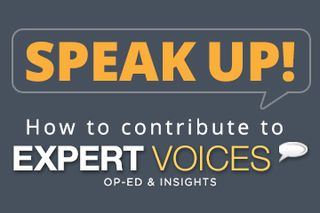
PowerPoint: The Beginning of the End for Real Reading (Op-Ed)

Naomi Baron is professor of linguistics at American University in Washington, D.C., and author of "Words Onscreen: The Fate of Reading in a Digital World," due out this winter from Oxford University Press. She contributed this article to Live Science's Expert Voices: Op-Ed & Insights.
PowerPoint has become as much a part of Americans' lives as fast food and urban gridlock. Go to business meetings, professional conferences or middle-school classrooms, and you'll find people clicking away through slide sets.
The origins of this digital powerhouse trace back to Aug. 14, 1984, when computer science researcher Robert Gaskins drafted a plan for a presentation graphics program. After its quiet beginnings, Gaskins' program — PowerPoint — was bought by Microsoft in 1987, forming the basis of the company's new Graphics Business Unit. Then, like kudzu, the program spread its tentacles. Gaskins might never have imagined his invention would be the forerunner of a reading style I call a "PowerPoint state of mind." Because of its negative effects on in-depth reading, such a state of mind is something that should concern us.
If there were meters gauging people's exposure to PowerPoint slide sets, the indicators would glow red. But what does the ubiquitous software do to the audience? Assuming the point size is large enough to decipher (and people are not overwhelmed by zooming graphics), viewers struggle to read what's thrown at them before the next slide pops up. If you've been to an Ignite event (increasingly popular at conferences), you know the speaker typically only gets five minutes to zip through 20 slides, which automatically advance every 15 seconds.
My concern isn't actually with PowerPoint, but with the frame of mind it puts people in when they read on a digital device. The challenge of reading onscreen is this: While today's computers were designed for accessing and searching for information, people now use them for all manner of reading — including on eReaders, tablets, and mobile phones. The PowerPoint mindset that readers associate with digital screens spills over into the way they approach more complex texts that, these days, they access electronically.
To vastly oversimplify, there are two types of reading. In Type 1, people linger over words, return to earlier passages and scribble notes in the margins. But in Type 2, people cruise along, often not bothering with every word or paragraph, and rarely backtracking.
The first kind of reading suits encounters with serious literature or meaty nonfiction. This is the domain of in-depth reading. The second makes sense for pulp fiction or magazines we leaf through in doctors' offices. But it's also the way most people tend to read on digital screens.
Sign up for the Live Science daily newsletter now
Get the world’s most fascinating discoveries delivered straight to your inbox.
Think about Web pages. Cognitive psychologist Jakob Nielsen said people don't actually read these sites; rather, they bounce around. (He has eye-tracking data to prove it.) Additional research from University College London described a similar phenomenon: Faculty and students were not reading online, but rather "power browsing."

Recently, Harris Interactive reported that 54 percent of Americans now read eBooks. Add to that number people only reading newspapers, blogs or tweets online, and the amount of onscreen reading soars. Yet, the more Americans read on digital devices, the more paradoxical the notion of "reading" becomes.
The problem is that digital screens weren't designed for serious reading. Sure, you're free to pull up "The Iliad" on your iPhone, but mountains of studies (including my own research) suggest not doing this. If your device has an Internet connection , your chance of concentrating is a fraction of what it would be when you read a printed book. Not surprisingly, a number of researchers worry that digital devices are driving people to abandon serious reading.
Here's where the PowerPoint state of mind comes in. Long before eReaders arrived, PowerPoint was already habituating people to skimming, scanning and skipping on digital screens — and not looking back. Today, the Internet, Kindles, iPads and mobile phones are the primary agents driving Type 2 reading. But Gaskins' PowerPoint prepared the ground. [Reading, Writing and – iPads?]
Follow all of the Expert Voices issues and debates — and become part of the discussion — on Facebook, Twitter and Google +. The views expressed are those of the author and do not necessarily reflect the views of the publisher. This version of the article was originally published on Live Science.












